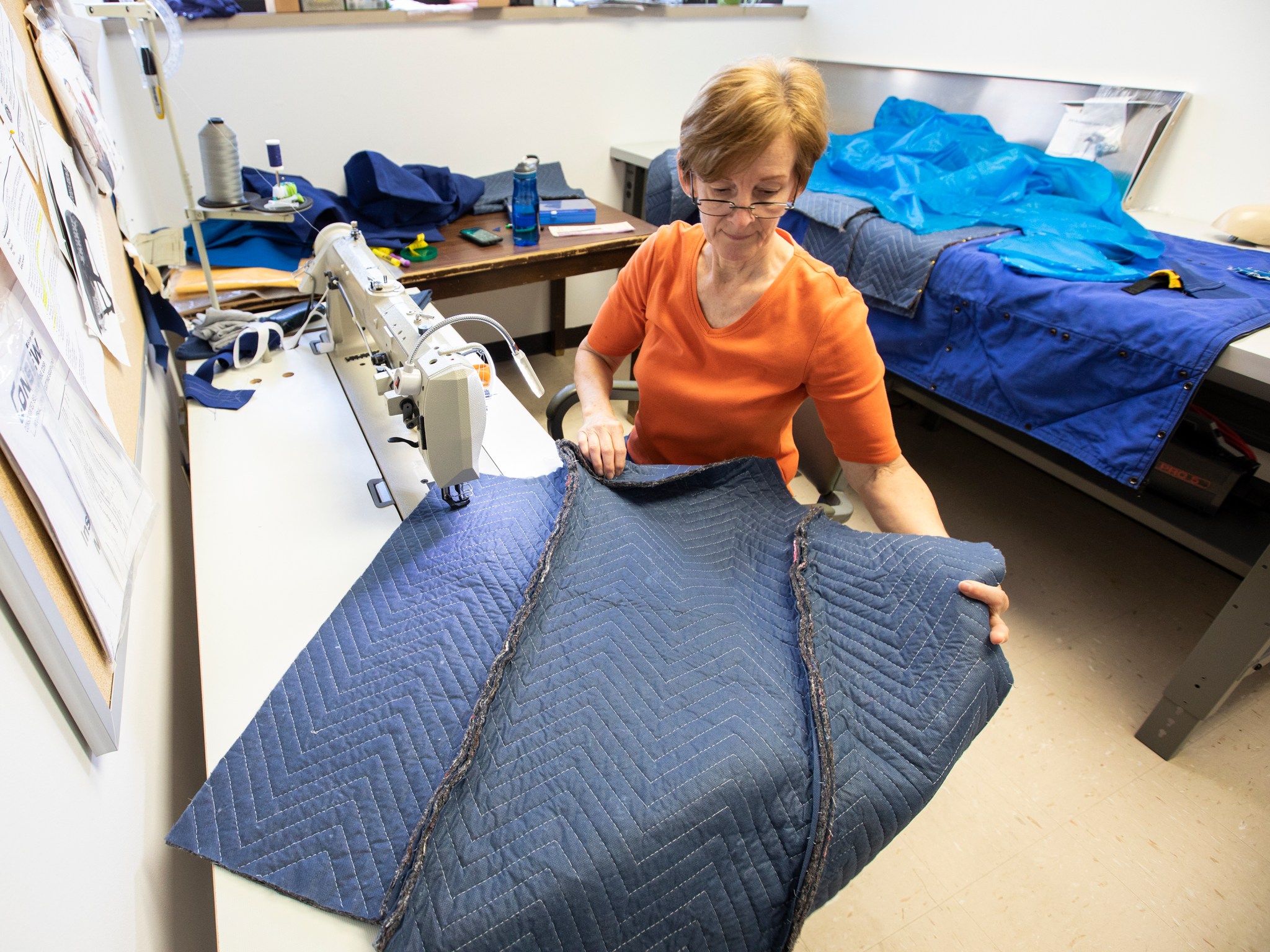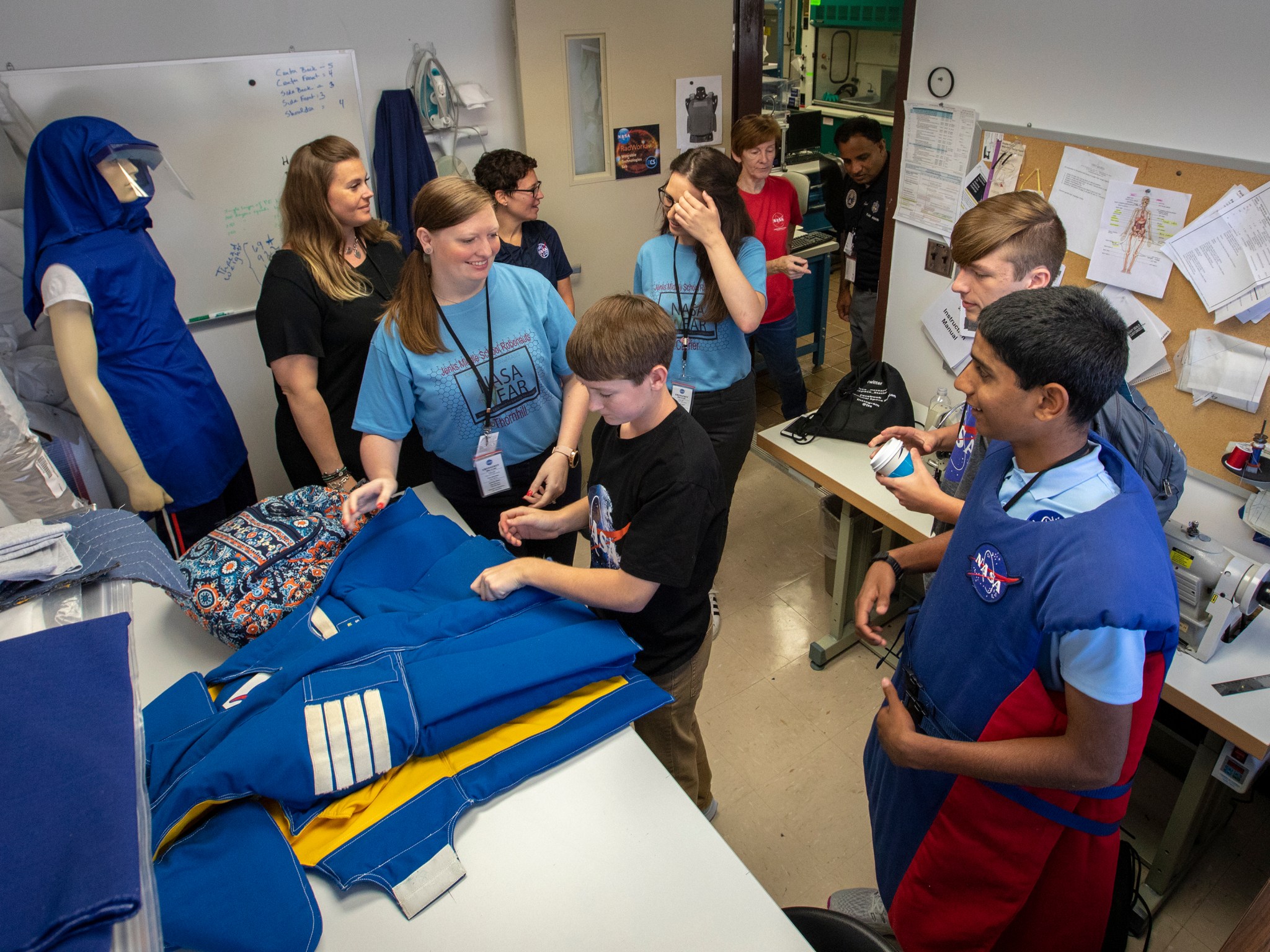NASA has overcome many difficult engineering challenges when it comes to human spaceflight – one that remains is how to best protect astronauts from space radiation.
A team at NASA’s Langley Research Center in Hampton, Virginia is working on one potential solution – a next-generation wearable radiation protection garment to protect against solar particle events.
A decade ago, a radiation protection vest was developed but it was never used. It served its purpose but was bulky and somewhat awkward. Now, a research team has completed a new prototype, using the previous version as a starting point. Sewn in-house, it is more streamlined, no longer uses Velcro or zippers making it easier to don quickly, and it provides more protection.
“The radiation protection garments being developed can protect astronauts during every phase of the upcoming Artemis missions,” said Martha Clowdsley, project manager.
After several iterations and piecing multiple patterns and ideas together, the prototype is ready for ground testing.
“The materials used are hydrogen-rich,” said Julie Hanson, project technical lead and human factor psychologist/engineer.
Hanson researches how people interact with technology. “We need to keep that in mind when designing,” she said.
As a result, the vest includes many layers and allows for movement and fit.
“It’s really trial and error, different fabrics fit and give differently, you can’t just make it out of anything,” said Crystal Chamberlain, senior technician. Chamberlain, who has worked on thermal and structures and materials analysis, has been sewing since she was six years old and now finds herself in the role of space seamstress.
The project started about a year ago and has a multi-disciplinary team. Sheila Thibeault, a physicist, is contributing to the research. The team also received input from middle and high school students who participated in a challenge this summer, designing garments to help mitigate radiation exposure during deep space missions.
Teams of educators and students from across the country participated in the 2019 Wearable Equipment for Adverting Radiation (WEAR) challenge led by NASA Johnson Space Center’s Office of STEM Engagement. Teams with the top designs visited Langley to discuss their concepts with NASA personnel, participate in STEM engagement activities, and tour NASA facilities.
“It was challenging and cool learning about radiation and ways to prevent it,” said Randy, an eighth-grader at Central Junior High in Pollock, Texas. Now having met with other teams and researchers at NASA he has ideas about things he’d change with his team’s design.
The students and researchers learned from one another. One of the WEAR teams came up with the idea to use sweat as insulation in a cotton layer worn under clothes with duct tape as a reservoir holder – something the NASA team hadn’t thought of. However, longevity and cost are factors in the wearables that many students didn’t consider.
If the prototype is successful, it might be manufactured for use by a commercial company.
“We need radiation protection for every mission,” Hanson said.
Kristyn Damadeo
NASA Langley Research Center


























